
Understanding policy contexts
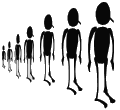
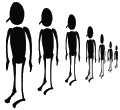
 |
Actor Analysis Understanding policy contexts |
  |
The figures below have been made using the network analysis tool Pajek. The concept networks have been generated by the HaMaC glossary tool. The first shows the relations that have been defined between all concepts; the next four show only the concepts that have been identified with in the work of a specific researcher on the NGI Understanding Complex Networks subprogram.
The complete concept network
Concepts used by Geertje Bekebrede
Concepts used by Michiel Houwing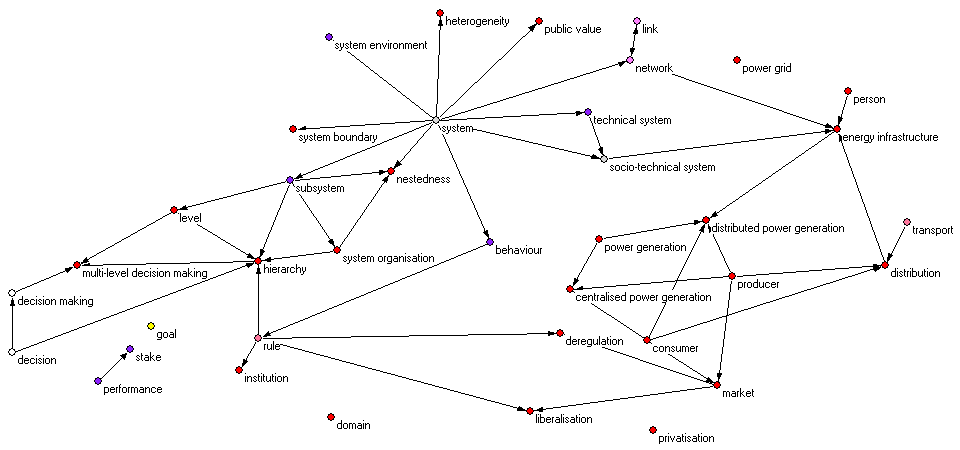
Concepts used by Igor Nikolic
Concepts used by Katerina Stankova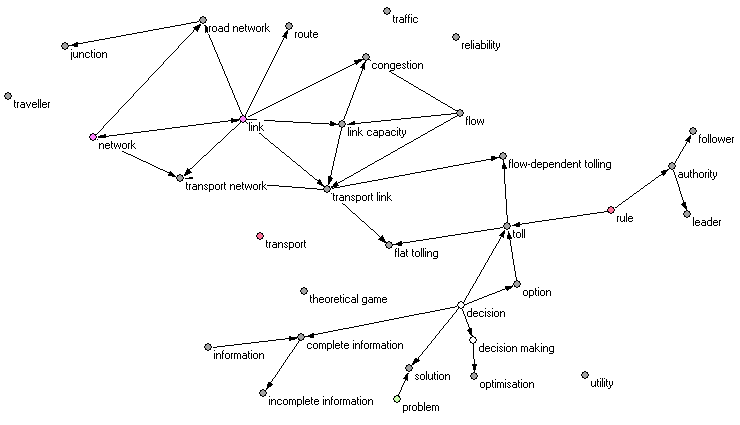
For each concept, the HaMaC glossary tool can generate a networks containing the concepts that are entailed by a selected concept. The figures below show two examples. An arrow from A to B indicates that concept A is used in the definition of concept B.
Concepts entailed by "intention"
Concepts entailed by "agent"
Note the double-headed arrow between "agent" and "agent-based model", caused by the unresolvable reciprocity of these concepts.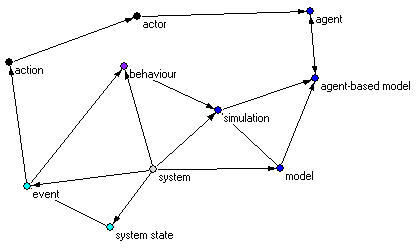
The HaMaC glossary can also generate networks containing the concepts that are related directly (via 1 edge) or indirectly (via 2 up to 5 edges) to a selected concept. The figures below show three examples of the neighbourhood of a concept. Note that the solid arrows represent paths from concepts entailed by the selected concept to this concept, whereas dotted arrows represent paths from concepts that entail the selected concept.
Concepts at 1 edge distance from "system state"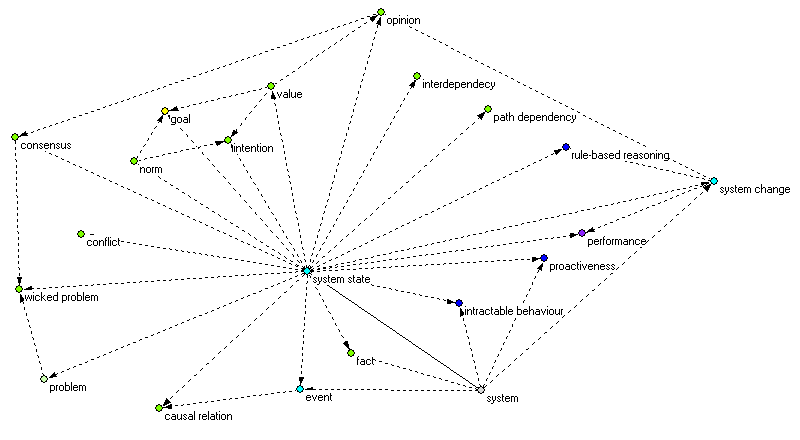
Concepts at 1 or 2 edges distance from "stake"
Concepts at 1 or 2 edges distance from "distributed power generation"
Note the absence of dotted lines, indicating that this concept is not entailed by any other concept.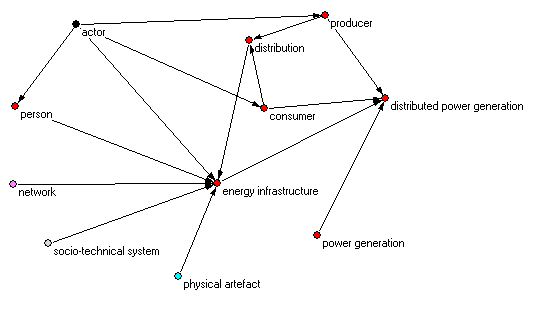
The concepts (rendered as nodes in Pajek) can be partitioned according to the authors that use them, and according to their "distance" from the "central" concept (the one selected by the user). The two figures below show the same network (2nd order neighbourhood of "rule"), first coloured by author, then by their distance from "rule".
Nodes coloured by author: green = Bekebrede, red = Houwing, blue = Nikolic, gray = Stankova, other colours represent combinations, e.g., cyan = green+blue = Bekebrede+Nikolic, light red = red+gray = Houwing+Stankova. Concepts in *M* only are black (no colour).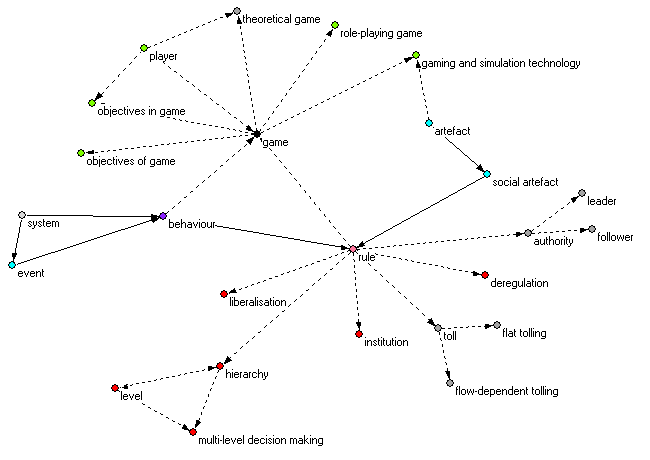
Nodes coloured by their distance from "rule": note that a distinction is made between concepts that are entailed by "rule" and concepts that entail "rule".